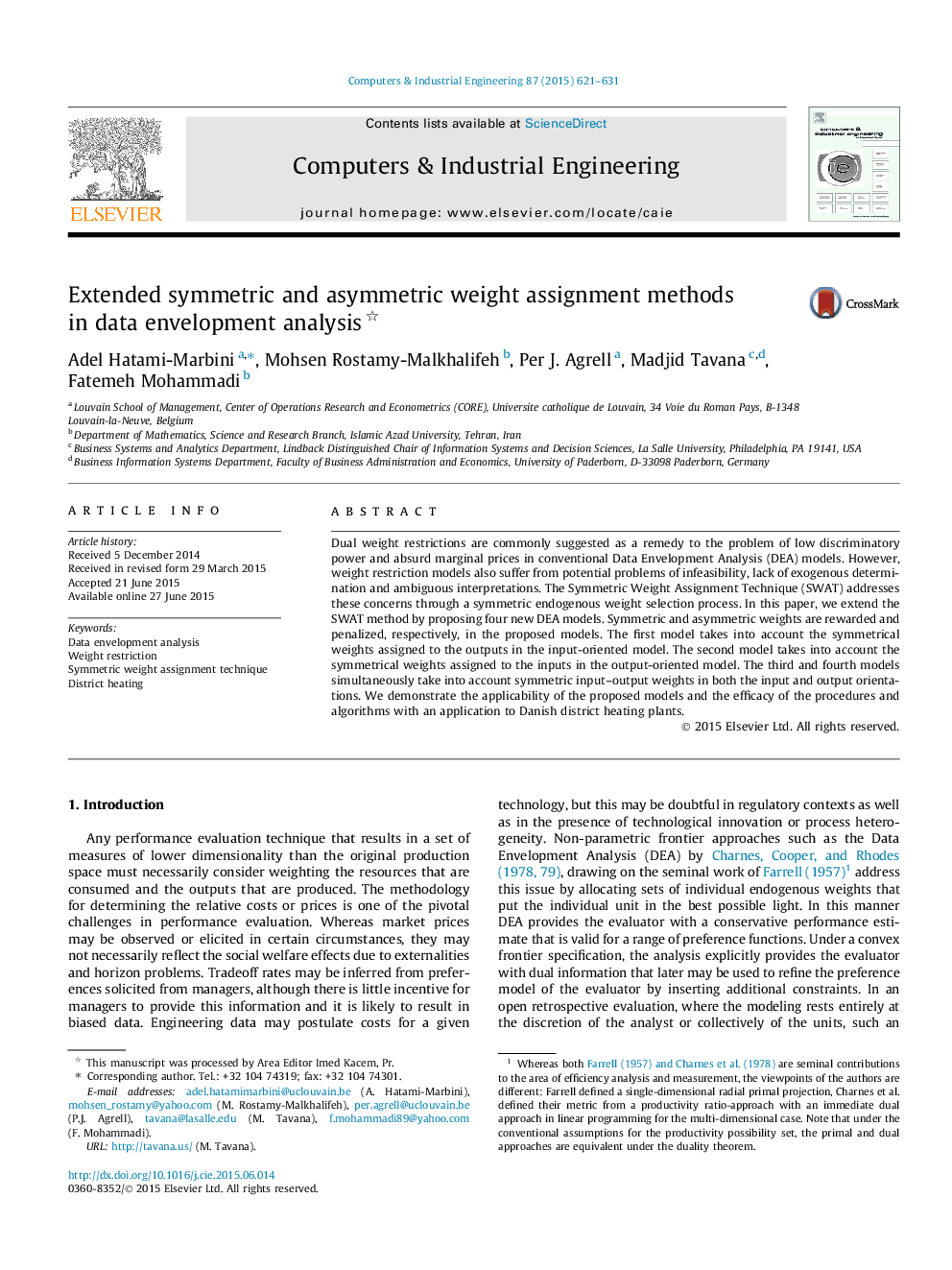| Article ID | Journal | Published Year | Pages | File Type |
|---|---|---|---|---|
| 1133593 | Computers & Industrial Engineering | 2015 | 11 Pages |
•Dual weight restrictions are used to eliminate low discriminatory power in DEA.•Weight restriction suffers from infeasibility and lack of exogenous determination.•Symmetric Weight Assignment Technique (SWAT) addresses these concerns.•We extend the SWAT method by proposing four new DEA models.•Symmetric and asymmetric weights are rewarded and penalized in our DEA models.
Dual weight restrictions are commonly suggested as a remedy to the problem of low discriminatory power and absurd marginal prices in conventional Data Envelopment Analysis (DEA) models. However, weight restriction models also suffer from potential problems of infeasibility, lack of exogenous determination and ambiguous interpretations. The Symmetric Weight Assignment Technique (SWAT) addresses these concerns through a symmetric endogenous weight selection process. In this paper, we extend the SWAT method by proposing four new DEA models. Symmetric and asymmetric weights are rewarded and penalized, respectively, in the proposed models. The first model takes into account the symmetrical weights assigned to the outputs in the input-oriented model. The second model takes into account the symmetrical weights assigned to the inputs in the output-oriented model. The third and fourth models simultaneously take into account symmetric input–output weights in both the input and output orientations. We demonstrate the applicability of the proposed models and the efficacy of the procedures and algorithms with an application to Danish district heating plants.
